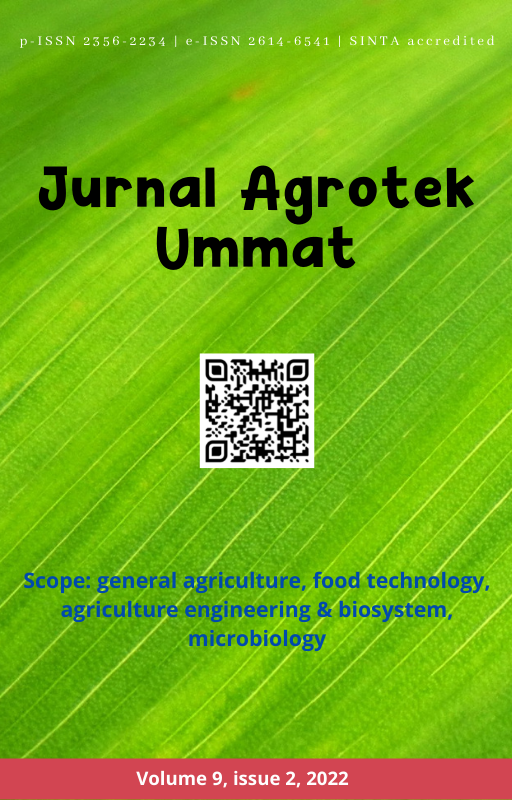Marketing analysis pearl lobster (Panulirus ornatus) in East Lombok Regency
DOI:
https://doi.org/10.31764/jau.v9i2.8293Keywords:
Channel, Efficiency, Marketing, Pearl LobsterAbstract
East Lombok Regency is one of the priority areas in the development of pearl lobster, so it has received government attention with the construction of a lobster village in the Jukung Bay Area as the foundation for the construction of a lobster estate in the region. One of the important goals of this development is the creation of information and market access that is open to cultivators so that they no longer depend on the price of pearl lobsters from suppliers. The concept of an efficient supply chain needs to be carried out to determine the distribution of pearl lobster commodities from producers to consumers which can result in satisfaction between both parties. This study aims to determine the marketing channels of pearl lobster in East Lombok Regency and analyze the efficiency of these marketing channels. The method used in this research is descriptive quantitative and qualitative methods with data collection techniques using interviews. Pearl lobster marketing analysis was carried out using descriptive methods while marketing efficiency analysis was carried out using producer shares and marketing margins. The results show that there are two kinds of pearl lobster marketing channels in East Lombok Regency, namely marketing channel I with the scheme of cultivators collectors wholesalers (exporters)/consumers and marketing channel II with cultivator consumer schemes. The value of the producer's share in marketing channel 1 is 89.49% with a marketing margin of Rp. 82,000 while the share value of producers in marketing channel II is 100% so the marketing of pearl lobster in East Lombok Regency is efficient because it has a producer share value of ≥60%. Based on these results, it can be concluded that there are two marketing channels for pearl lobster in East Lombok Regency, where these marketing channels are classified as efficient.References
Anh, T. L., & Jones, C. (2015). 2.4 Lobster Seed Fishing, Handling and transport in Vietnam. Proceedings of the International Lobster Aquaculture Symposium Held in Lombok, Indonesia, 22–25 April 2014 (hal. 31-35). Canbera: Australian Centre for International Agriculture Research.
Antaranews. (2022, Maret 28). ANTARA:Kantor Berita Indonesia. Diambil kembali dari antaranews.com: https://www.antaranews.com/berita/2785629/kkp-resmikan-kampung-lobster-di-lombok-timur-ntb
Arbi, M., Thirtawati, & Junaidi, Y. (2018). Analisis Saluran dan Tingkat Efisiensi Pemasaran Beras Semi Organik di Kecamatan Rambutan Kabupaten Banyuasin. Jurnal Sosial Ekonomi Pertanian, 11(1), 22-32.
Ardillah, F., & Hasan, F. (2020). Saluran, Margin, dan Efisiensi Pemasaran Bebek Pedaging di Kecamatan Burneh Kabupaten Bangkalan. Agriscience, 1(1), 12-25.
Bahrawi, S., Priyambodo, B., & Jones, C. (2015). Census of the lobster seed fishery of Lombok. Proceedings of the International Lobster Aquaculture Symposium held in Lombok, Indonesia, 22-25 April 2014 (hal. 12-19). Canbera: Australian Centre for International Agricultural Research (ACIAR).
Dao, H. T., & Jones, C. (2015). Census of the lobster seed fishery of Vietnam. Proceedings of the International Lobster Aquaculture Symposium held in Lombok, Indonesia, 22-25 April 2014 (hal. 20-26). Australia: ACIAR Proceedings Series.
Erlania, Radiarta, I. N., & Haryadi, J. (2016). Status Pengelolaan Sumberdaya Benih Lobster untuk Mendukung Perikanan Budidaya: Studi Kasus Perairan Pulau Lombok. Jurnal Kebijakan Perikanan Indonesia, 8(2), 85-96.
Huda, M., Solihin, I., & Lubis, E. (2015). Tingkat Efisiensi Pemasaran Ikan Laut Segar di Pelabuhan Perikanan Nusantara Brondong. Jurnal Teknologi Perikanan dan Kelautan, 6(1), 91-104.
Jumiati, E., Darwanto, D. H., Hartono, S., & Masyhuri. (2013). Analisis Saluran Pemasaran dan Marjin Pemasaran Kelapa Dalam di Daerah Perbatasan Kalimantan Timur. Jurnal AGRIFOR, 12(1), 1-10.
Mustafa, A. (2013). Budidaya Lobster (Panulirus sp.) di Vietnam dan Aplikasinya di Indonesia. Media Akuakultur, 8(2), 73-84.
Nashruddin, M. (2017). Analisis Kelayakan Usaha Budidaya Udang Lobster Dengan Sistem Keramba Jaring Apung (KJA) di Teluk Jor. Journal Ilmiah Rinjani, 5(1), 158-164.
Nursan, M., Husni, S., Yusuf, M., FR, A. F., & Widiyanti, N. M. (2021). Technical Efficiency of Lobster (Panulirus sp) Farming in East Lombok Regency. Jurnal Biologi Tropis, 1087-1095.
Ridwana, Rusman, Y., & Ramdan, M. (2015). Analisis Saluran Pemasaran Kelapa (Cocos nucifera L) (Suatu Kasus di Desa Ciakar Kecamatan Cijulang Kabupaten Pangandaran). Jurnal Ilmiah Mahasiswa AGROINFO GALUH, 1(3), 183-188.
Sudana, I. W. (2019). Analisis Efisiensi Pemasaran Ikan Teri Segar Hasil Tangkapan Nelayan di Desa Sanggalangit Kabupaten Buleleng. Jurnal Pendidikan Ekonomi, 11(2), 637-648.
Sugiono. (2017). Metode Penelitian Kuantitatif dan, Kualitatif, dan R&D. Bandung: Alfabeta.
Sutarno, & Setyawan, A. D. (2015). Biodiversitas Indonesia: Penurunan dan Upaya Pengelolaan untuk Menjamin Kemandirian Bangsa. Prosiding Seminar Nasional Masyarakat Biodiversitas Indonesia (hal. 1-13). Surakarta: Mayarakat Biodiversitas Indonesia.
Triyanti, R., & Risma, Y. (2015). Analisis Manajemen Rantai Pasok Lobster. Jurnal Sosial Ekonomi Kelautan dan Perikanan, 10(2), 203-216.
Downloads
Published
Issue
Section
License
Authors who publish articles in Jurnal Agrotek Ummatagree to the following terms:- Authors retain copyright of the article and grant the journal right of first publication with the work simultaneously licensed under a CC-BY-SA or The Creative Commons Attribution–ShareAlike License.
- Authors are able to enter into separate, additional contractual arrangements for the non-exclusive distribution of the journal's published version of the work (e.g., post it to an institutional repository or publish it in a book), with an acknowledgment of its initial publication in this journal.
- Authors are permitted and encouraged to post their work online (e.g., in institutional repositories or on their website) prior to and during the submission process, as it can lead to productive exchanges, as well as earlier and greater citation of published work (See The Effect of Open Access).

